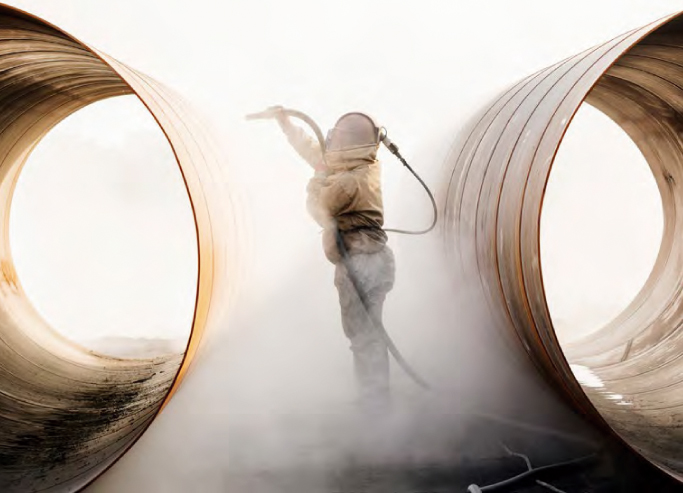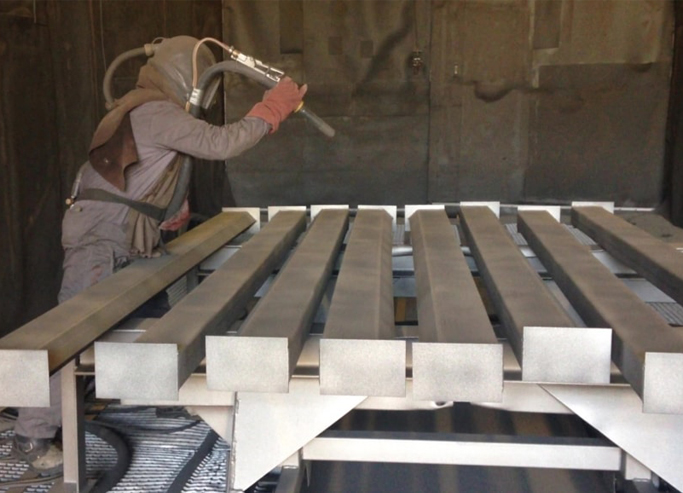Surface Preparation
Regardless of the element or installation, be it a metal structure, a storage tank, a ship, etc., the first step to ensure the best adherence of protective coatings and thereby extend their lifespan is to perform proper surface preparation.
At ALTTION, we understand the importance of this step. Therefore, always adhering to regulations and specific protocols, we handle the following tasks:
- Remove oxides, scale, or other visible and invisible contaminants (dust, grease, soluble salts, residues, etc.) from the surface.
- Create the appropriate surface roughness profile to achieve maximum adhesion.


Surface Preparation Techniques
To achieve durability and optimal fixation of protective coatings, ALTTION professionals specialize in the following surface preparation techniques:
Cleaning with water, solvents, and chemicals
Primary washing to remove oils, greases, mud, fumes, dirt, loose rust, etc.
Chemical and acid pickling
Removal of coatings using chemical agents.
Manual and/or mechanical tools
Depending on the area to be prepared, conventional abrasive blasting might be impossible. In such cases, ALTTION has state-of-the-art tools and machinery, both manual and mechanical, offering similar cleanliness levels.
Dry Abrasive Blasting: with various abrasives and granulometries
This is the traditional method of surface preparation. The abrasives used vary based on the desired cleanliness level and roughness. They come in various types and sizes, such as minerals, metals, plastics, or natural materials.
Wet Blasting or Vapor-Blasting
Similar to dry abrasive blasting, water and abrasive are mixed under pressure and dosed into the airflow, impacting the wet abrasive against the surface. Dust emissions are reduced, facilitating preparation in complex environments.
Automatic Grit Blasting
A process designed for large flat surfaces such as tank bottoms and ceilings, ship decks, steel plates, etc. As it’s a closed-loop system, including abrasive recovery and recycling, dust emissions are minimal.
High/Ultra High-Pressure Water Cleaning (Waterjetting – Hydrojetting)
Stripping with high or ultra-high-pressure water up to 2,500 bar, removing dirt, grease, scale, or paint coatings, while preserving the existing roughness profile.
Cryogenic Cleaning (Dry Ice – CO2) Dry ice blasting
Used to remove specific contaminants (greases, dirt, foreign materials, etc.) while maintaining a low-dust working environment. Dry ice impact doesn’t alter the surface roughness and is particularly suitable for cleaning surfaces that cannot be wet, such as electrical panels.
Induction Stripping
Suitable for the removal of rubbery or thick coatings. It involves generating an electromagnetic field that induces a current on the metal surface, creating the necessary heat to break the coating’s adhesion, leading to quick and clean removal.